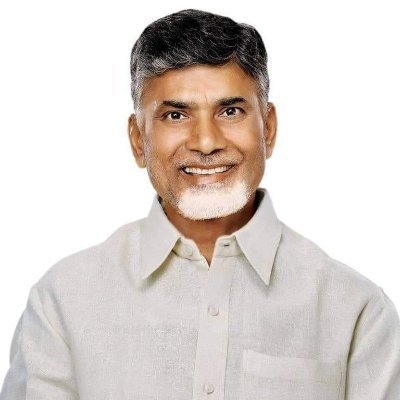
Nara Chandrababu Naidu is one of the eminent politician of India who have definitely left their remark in the political map of Andhra Pradesh as well as in the whole country. Naidu is one of the most prominent political figures belonging to Andhra Pradesh. He was born on April 20, 1950, in a small village known as Naravaripalle in Chittoor district.
Naidu’s life is an interesting story of a farmer’s son who went on to become a significant political leader in the country. Described as a visionary leader with innovative ideas in his political career he is a determined campaigner for development.
Chandrababu Naidu: Political Biography
Chandrababu Naidu’s initial step into politics was during his student life when he was studying at Sri Venkateswara University located in Tirupati. In the shared political phase, he was a member of the Indian National Congress, and under its banner, at the age of 28 he was elected as the youngest member of the Andhra Pradesh Legislative Assembly.al future is in turnaround when he came to the Telugu Desam Party TDP for which he worked under his Father in law Nandamuri Taraka Rama Rao NTR.
Due to strategic thinking and efficient management ability, Naidu rose to the TDP’s front-line within the shortest time possible. In 1995, in a scintillating political move he supplanted NTR who was at that time the Chief Minister of Andhra Pradesh. This decision was provocative at first; however, Naidu proved his worth as a manager and able to propose new concepts.
Leadership and Technology
Out of all the accomplishments that Naidu has made regarding Andhra Pradesh’s development, perhaps one of the most significant has been the measures towards the utilization of technology and attaining modernization.
Acknowledging the fact of information technology at the initial stage, he changed Hyderabad into IT city, also called ‘Cyberabad.’ Under his government, policies such as HITEC City and IT Parks were launched and many multinational companies like Microsoft entered into the Hyderabad map.
Naidu also had this vision going into IT. He ranged numerous e-governance projects acquiring Andhra Pradesh as one of the most developed states in India in terms of digitization. This led him to focus on the efficient use of technology in governance, which made him to be awarded and recognized by other world leaders and institutions.
Economic Reforms and Physical Infrastructure
The tenure of Naidu saw decent measures of liberalisation in economy and constructional activities. He is principally associated with a favourable stance towards business: investing in private sector and privatization. He supported the mechanism that enhanced industrialization and infrastructural development such as the construction of roads, ports and airport.
He also had the vision of the Polavaram irrigation project for the state to overcome water problem and boost the agriculture. He also focused on the power sector awareness to ensure that the state confirms to Andhra Pradesh as power surplus state.
Social Welfare as well as Rural Development
Despite the fact that Naidu was keen in the development of the city and sciences and his technology savvy centered programs, he also began many a social service schemes with intention to raise the quality of life of the rural people. His government initiated a housing, healthcare, and education outgoing, Especial for the suffering segments of society.
Probably one of his most welfare programs was the “Janmabhoomi” that sought to engage people in governance and developmental projects. It was a participative form of development that aimed at mobilizing community’s support and /or ensured that intended development projects were well championed.
Challenges and Political Setbacks
Nonetheless, Naidu’s political career as described in this paper has been characterized by some challenges and disappointments. His policies that boosted the urban and business domains of the society spurred development but were seen as lack of support to the farming groups. This led to political alienation of the farmers and the rural voters and this was evident when he lost the 2004 elections.
In the light of this, Naidu returned to power in the year 2014 after the decade long rule being elected as the first Chief Minister of the newly created state of Andhra Pradesh. His second term however concentrated on the development of the state with the enthusiastically projected capital of Amaravati to be a global standard.
But the vision of achieving such a status was rather blurred by financial obstacles which are always accompanied by political barriers.
Legacy and Future Prospects
Political craftsmanship, technological wizardry, and policy initiative are the major inputs that rooted from the Chandrababu Naidu strategies. These policies clearly suggest that he had the vision to perceive the role of technology particularly in development of the structures of governance as well as the economy of the state in other states of India.
No doubt, there are political controversies and criticisms prevailing against him, but the composite transformation he has given to Andhra Pradesh especially with Hyderabad making it an IT city has no parallel.
The political career of Naidu has been in the future still remains a topic of major concern among the people. Stil as the leader of the TDP party he is still one of the most influential politicians in Andhra Pradesh. His performance, tact, and dedication make him relevant regardless of the volatility in the political environment.
The Final Words
The example of Chandrababu Naidu as a political figure clearly proves that the skillful leader can bring about change and introduce innovations into people’s life. The story of this technologist inspires and challenges every citizen of Andhra Pradesh today, where a man from a rural background took so much of risk with his vision and created a big revolution in terms of technological and economical development.